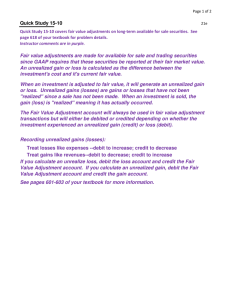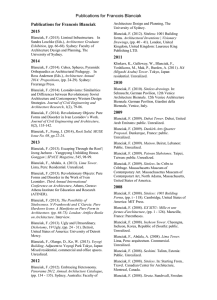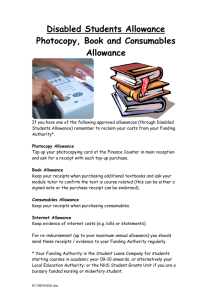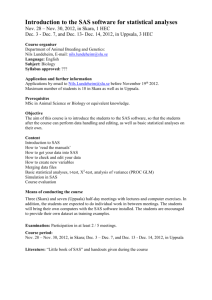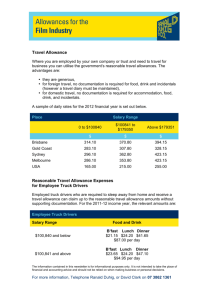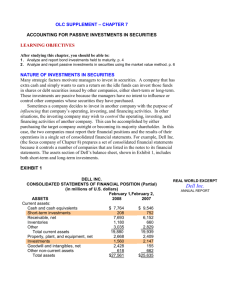Chapter 12
advertisement
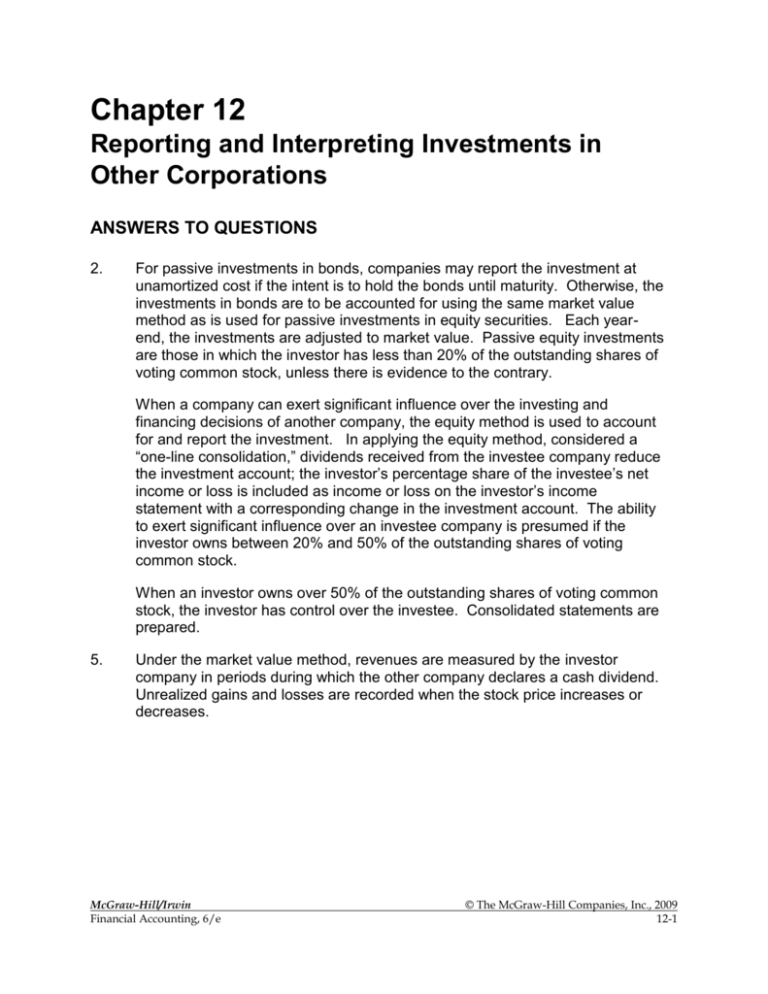
Chapter 12 Reporting and Interpreting Investments in Other Corporations ANSWERS TO QUESTIONS 2. For passive investments in bonds, companies may report the investment at unamortized cost if the intent is to hold the bonds until maturity. Otherwise, the investments in bonds are to be accounted for using the same market value method as is used for passive investments in equity securities. Each yearend, the investments are adjusted to market value. Passive equity investments are those in which the investor has less than 20% of the outstanding shares of voting common stock, unless there is evidence to the contrary. When a company can exert significant influence over the investing and financing decisions of another company, the equity method is used to account for and report the investment. In applying the equity method, considered a “one-line consolidation,” dividends received from the investee company reduce the investment account; the investor’s percentage share of the investee’s net income or loss is included as income or loss on the investor’s income statement with a corresponding change in the investment account. The ability to exert significant influence over an investee company is presumed if the investor owns between 20% and 50% of the outstanding shares of voting common stock. When an investor owns over 50% of the outstanding shares of voting common stock, the investor has control over the investee. Consolidated statements are prepared. 5. Under the market value method, revenues are measured by the investor company in periods during which the other company declares a cash dividend. Unrealized gains and losses are recorded when the stock price increases or decreases. McGraw-Hill/Irwin Financial Accounting, 6/e © The McGraw-Hill Companies, Inc., 2009 12-1 EXERCISES E12–1. Req. 1 July 1, 2010: Investment in bonds (+A) ...................................................... 10,000,000 Cash (–A) ....................................................................... 10,000,000 Req. 2 Dec 31, 2010: Cash (+A) ............................................................................. Interest revenue (+R, +SE) ............................................. ($10 million x 10% x 6/12 of a year) 500,000 500,000 E12–3. June 30, 2010: Investment in TS (+A) ........................................................... Cash (–A) .......................................................................... (7,000 shares x $20 per share) 140,000 140,000 Dec 31, 2010: Allowance to value at market – TS (+A) ................................ Net unrealized loss/gain – TS (+Gain, +SE) ...................... 28,000 Dec. 31, 2011: Allowance to value at market – TS (+A). ............................... Net unrealized loss/gain – TS (+Gain, +SE) ...................... 49,000 Dec. 31, 2012: Net unrealized loss/gain – TS (+Loss, –SE).......................... Allowance to value at market – TS (–A) ............................ 42,000 McGraw-Hill/Irwin 12-2 28,000 49,000 42,000 © The McGraw-Hill Companies, Inc., 2009 Solutions Manual E12–3. (continued) Computations: Year Market Cost = Allowance Balance Unadjusted Balance = Adjustment 2010 $168,000 $140,000 +$28,000 $0 +$28,000 2011 217,000 140,000 + 77,000 + 28,000 + 49,000 2012 175,000 140,000 + 35,000 + 77,000 42,000 Feb. 14, 2013: Cash (+A) (7,000 shares x $23) ............................................ Loss on sale of investment (+Loss, –SE) .............................. Investment in TS (–A). ....................................................... Allowance to value at market – TS (–A) ............................ 161,000 14,000 140,000 35,000 Note: The net unrealized loss/gain is an income statement account. This item is reported on the current income statement and affects the computation of net income. It is closed to Retained Earnings at the end of each year. McGraw-Hill/Irwin Financial Accounting, 6/e © The McGraw-Hill Companies, Inc., 2009 12-3 E12–4. June 30, 2010: Investment in SAS (+A) ......................................................... Cash (–A) .......................................................................... 140,000 Dec. 31, 2010: Allowance to value at market – SAS (+A).. ........................... Net unrealized loss/gain – SAS (+SE) ............................... 28,000 Dec. 31, 2011: Allowance to value at market – SAS (+A). ............................ Net unrealized loss/gain – SAS (+SE) ............................... 49,000 Dec. 31, 2012: Net unrealized loss/gain – SAS (–SE)................................... Allowance to value at market – SAS (–A). ......................... 42,000 140,000 28,000 49,000 42,000 Computations: Year Market Cost = Allowance Balance Unadjusted Balance = Adjustment 2010 $168,000 $140,000 +$28,000 $0 +$28,000 2011 217,000 140,000 + 77,000 + 28,000 + 49,000 2012 175,000 140,000 + 35,000 + 77,000 42,000 Feb. 14, 2013: Cash (+A) (7,000 shares x $23). ........................................... Net unrealized loss/gain – SAS (–SE)................................... Allowance to value at market – SAS (–A). ......................... Investment in SAS (–A). .................................................... Gain on sale of investment (+Gain, +SE) .......................... 161,000 14,000 14,000 140,000 21,000 Note: The net unrealized loss/gain account is a balance sheet account. It does not affect the computation of net income each year. Because it is a balance sheet account, it maintains its balance from year to year. Therefore, the decline in stock price that occurs in 2012 is reported as an adjustment to the net unrealized loss/gain account. When the stock is sold in 2013, the net unrealized loss/gain is closed along with the Allowance to Value at Market account, and the difference between the purchase price (original cost) and the selling price is reported as a gain on the income statement. McGraw-Hill/Irwin 12-4 © The McGraw-Hill Companies, Inc., 2009 Solutions Manual

